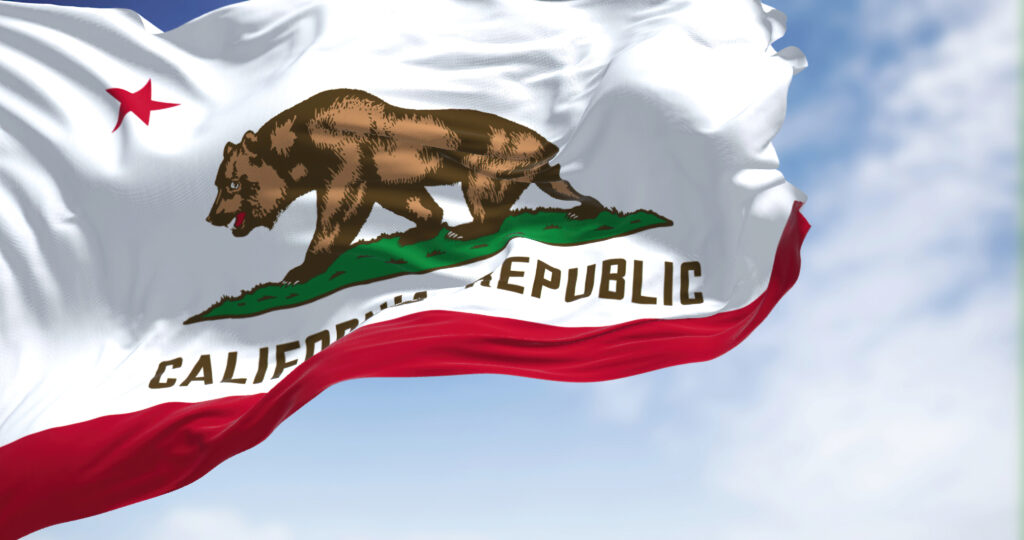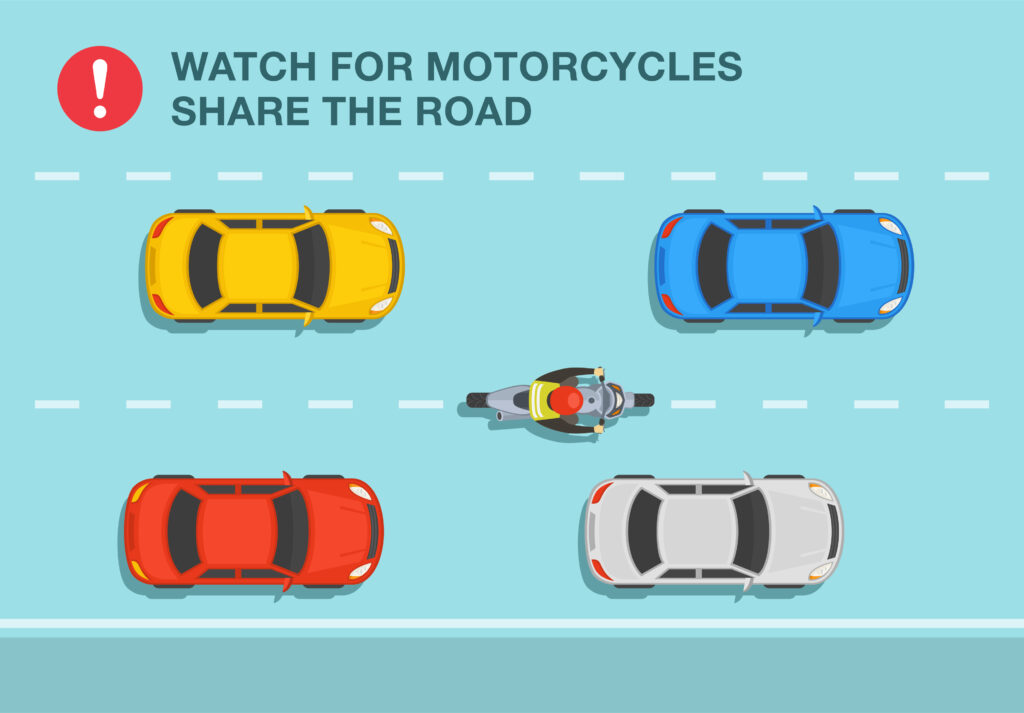Lane Splitting California
If you are a motorcyclist in California, you probably consider lane splitting a common practice and see other riders do it on the road. It can be a way to save time, avoid traffic congestion, and reduce the risk of rear-end collisions.
While California legalized lane splitting, the practice of driving between two lanes must be done so safely and responsibly. If you were in a motorcycle collision, call our Cerritos motorcycle accident lawyer for a free consultation.
What Is Lane Splitting?
Under California Vehicle Code, lane splitting is defined as “driving a motorcycle … that has two wheels in contact with the ground, between rows of stopped or moving vehicles in the same lane, including on both divided and undivided streets, roads, or highways.” In August 2016, California became the first state to legalize lane splitting.
However, lane splitting is considered legal only under certain circumstances. For example, motorcyclists can split lanes only on a broken white line, not on a solid white line or yellow line. Riding on the shoulder is illegal. The California Highway Patrol (CHP) also recommends that motorcyclists do not exceed 35 miles per hour when lane splitting and do not exceed the flow of traffic by more than 10 miles per hour.
What Is Lane Filtering?
Some states allow lane filtering, which is considered a different practice where a motorcyclist is in between lanes of stopped traffic. Lane filtering is common at intersections or in congested areas where traffic is stopped or crawling. Lane filtering can have some benefits for motorcyclists and other motor vehicles, such as:
- Relieves traffic congestion
- Reduces the risk of a overheating motorcycle
- Avoids motorcyclist being trapped between cars
- Lessons rider fatigue and discomfort by avoiding long periods of sitting in traffic
Where is Lane Splitting Legal?

Lane filtering and lane splitting laws vary widely across the United States. Currently, California is the only state that permits lane splitting and lane filtering.
Lane filtering is legal in four other states: Utah, Montana, Arizona, and Hawaii. However, each state has its own specific rules and conditions for allowing lane filtering. Utah allows lane filtering only when “a motorcycle is overtaking a vehicle that is stopped in the same lane of travel and there are two or more adjacent traffic lanes in the same direction of travel.”
Montana allows lane filtering only on roads with a speed limit of 35 mph or less, and only when traffic is stopped or moving at less than 10 mph. Arizona allows lane filtering only on roads with one lane for each direction of travel, and only when traffic is stopped. Hawaii allows lane filtering only on roads with two or more lanes for each direction of travel, and only when traffic is moving at 10 mph or less.
Is Lane Splitting Dangerous?
Lane splitting is a controversial topic between motorcyclists as well as other other vehicle drivers. Some regard it as safe, while others consider it to be too risky.
Several organizations, including the American Motorcyclist Association (AMA) and the National Highway Traffic Safety Administration (NHTSA), endorse lane splitting as a safe and beneficial practice for motorcyclists. Some of the benefits they claim are:
- Improves motorcyclist safety
- Decrease traffic congestion
- Saves fuel consumption and emissions by avoiding idling in traffic
- Reduces the risk of overheating for air-cooled motorcycles
- Reduces the risk of rear-end collisions with larger vehicles
However, lane splitting can also be dangerous. Splitting lanes reduces the space between the motorcyclist and the other driver. Some of the other risks of lane splitting are:
- Increases the risk of side-swipe collisions.
- Increases the risk of hitting road debris, uneven pavement, or other hazards that may be present between lanes.
- Increases the risk of injury due to the higher speed differential and lack of protection.
- Startles or angers other drivers who may perceive lane splitting as rude or reckless.
Only experienced and skilled motorcycle riders should consider lane splitting. Riders must also respect and show courtesy to other road users.
Lane Splitting Safety Tips: Share the Road

Motorcycle lane splitting is safe as long as you follow the rules of the road and consider the surrounding traffic. Follow these lane splitting safety guidelines from the California Highway Patrol and California Office of Traffic Safety:
- Wear proper protective gear, such as a helmet, gloves, boots, jacket, pants, and eye protection.
- Maintain a safe following distance from surrounding vehicles and avoid tailgating.
- Use your mirrors, turn signals, and horn to communicate your intentions and position to other drivers.
- Be prepared to stop or merge with traffic if the situation changes or becomes unsafe.
- Do not lane split if you are impaired by alcohol, drugs, fatigue, or stress.
- Do not lane split if you are riding with a passenger or carrying a large load.
- Avoid lane splitting if you are an inexperienced rider.
Talk to a Motorcycle Accident Lawyer
Motorcycle accidents can lead to devastating and painful injuries, both physically and psychologically. If you were lawfully lane splitting and another vehicle hit you, you may be able to recover financial compensation in a motorcycle accident claim.
The motorcycle accident lawyers at Heritage Accident Lawyers are dedicated in helping motorcycle accident victims after serious traffic and road accidents. Even if you were partly at fault, you can still pursue compensation from the other party under California comparative negligence law. Call us for a free consultation at 562-376-5595.

